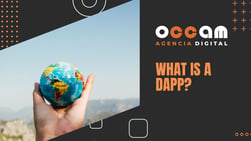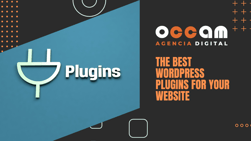Index Content
The first websites appeared in 1992. They were static pages, which could only be accessed and modified through html code. In these websites, colours and images prevailed. They were intended to be eye-catching, but they were not concerned with usability and accessibility.
If your company does not yet have a presence on the web, an online showcase to present your products and services, or you simply have not renewed your image for too long, perhaps the time has come to create your website.
what is a web page?
A web page is a document that is part of a website and usually contains links (also known as hyperlinks) to facilitate navigation between contents.
Web pages are developed with mark-up languages such as HTML, which can be interpreted by browsers, and can present information in different formats (text, images, sounds, videos, animations), be associated with style data or have interactive applications.
Among the many characteristics that a web page has and that serve to identify it are the following: it has textual information and also audiovisual material, it has an attractive design, it is optimised and it acts as the business card of a company, a person or a specific professional.
With this in mind, I am going to tell you about the most common types of websites that you can find on the Internet:
- Static websites: these are those in which the content shown is informative and does not usually change. The user can hardly influence it. It is a very basic type of website, and in many cases it does not even have a database.
- Dynamic websites: in contrast to the previous ones, dynamic websites add more movement: they are interactive and versatile. All the content can be modified according to the needs of the company and the users who visit it.
- Blogs: this type of page is born with a very clear objective: to show updated information of value to the users. It could be seen as an online newspaper in which news is published on a regular basis.
- Corporate websites: within business websites, the corporate website is usually one of the most popular options. On this website, the company provides all the information it wants to transmit to the user. The objective pursued by this type of website is branding the brand and showing the user everything it offers (products or services), as well as its mission, vision and values.
- Online shops: the so-called online shops or ecommerce are another type of website that you can frequently find and that focus on selling products or services to internet users without the need for a physical shop.
Marketing and web design: your key to success. Click here to learn about the most important aspects of web design .
Structure of web pages
When we talk about the structure of a web page, known as web structure, we have to differentiate between these three parts:
- Header: the header is the top part of the web page. It contains the basic information about the company or brand and is consistent throughout the site, i.e. it is repeated on each page of the website that we visit. The elements that are normally found in the header are:
- Company logo
- The navigation menu
- A search box
- A short description of the website
These elements often differ depending on the WordPress template you use, but they are the most common.
It is important that when you create your website you fix the header, what does this mean? Well, as a user scrolls down any of the pages, the header remains fixed and your branding and the most important access points of your site, such as the menu, are always accessible as they navigate through your site.
- Body: this is the part of the website that houses the main content of your page. This part is different on each page of your site, i.e. the content you include on your contact page will not be the same as on the main page.
- Footer: the footer is the bottom part of a web page. Like the header, it is repeated and consistent on each page. It also includes basic elements such as:
- Simplified menu
- Contact information
- Social media buttons
- Company logo
- Link to privacy policy
Click here to learn howto create your WordPress website from scratch.
Parts of a website based on its content
The parts into which a web page can be divided to make it optimal for browsing are:
Home
If we talk about the parts of a website, the main page or home page is the most important of all. It includes the most important information about your company, as it is where you have to project your brand and show your visitors what you do.
On the home page you usually find:
- CTA or call to action: essential to get your visitors to perform the action you suggest: buy/subscribe..
- Summary of your products and services: generally you usually mention your products with a good image or a slogan, so that your visitors know in just 3 seconds what you do. Without going into too much detail, for that you will have your own page.
- Offers: if you have an important offer that you want to highlight, the home page is usually the most appropriate part of the website to advertise it.
- Indicators of success: number of clients, number of employees, countries in which you operate, years of experience... Anything goes to show that you are the best.
- Testimonials or collaborations: It is very common to find testimonials, Google reviews or the logos of the companies you have worked for on the home page.
Contact
The telephone number, address and opening hours are three basic elements that must be on all contact pages and, of course, also in the header and footer. But, in addition to this, it is highly recommended to include the following elements:
- Contact form: you will give your customers the possibility to contact you 24 hours a day and this conveys a very good image.
- Professional e-mail address: create personalised e-mail addresses with your domain and transmit that you are a professional.
Products and services
When you create the content of a website, ideally you should include more detailed information about the products you sell or the services you offer on a specific page.
In this part of the website you should include everything related to your products or services: advantages of your products, main features, who they are aimed at, the price, shipping costs... Of course, don't forget the importance of a good call to action in this part of your website.
Blog
When we talk about content distribution and parts of a website, we can say that the blog page is indisputably one of the most important pages of your site.
Creating a blog can make your business take off once and for all, it is indispensable for your content strategy and a key piece if you want to improve your organic positioning in Google and gain visits to your website.
The most common web elements you will find in almost any blog are:
- Search engine: not all website templates include a search engine function, but blog templates almost all of them do.
- Subscription form: including a subscription box in a blog is a way to generate quality leads. Even if they are not customers, you already have their email account to send them the content you publish and, little by little, you can gradually bring them closer to the purchasing process.
- Categories and tags: another of the elements that it is advisable to include in this part of your website is a section with the categories of the contents of your blog. It is a good way to structure the content and improve the usability of your site.
Privacy policy
It is probably one of the least viewed pages of a website, but one of the basic requirements is to provide your users with all the information related to the processing of the data that is collected through your website.
This part of your website does not have to be in the main menu, but you have to include it, usually in the footer, as well as in the cookie notices or when you include a registration or subscription form.
The structure is a dynamic element, we do not always have to follow the same one. The more different it is, the more creative it will be. Although there are certain limits. The more we change the order of these elements, the more complex the navigation and understanding of this page will become, which will inevitably reduce the number of users able to navigate that page. This does not mean that we always have to make all the structures the same, only that we must take into account our target audience before designing the page.






